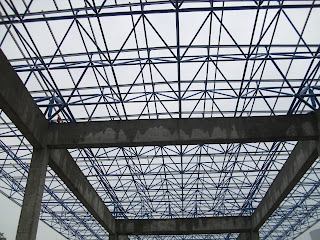What are the features of FEA software?
What are the features of FEA software?
Finite Element Analysis (FEA) software is a class of professional engineering software used to perform Finite Element Analysis (FEA), i.e., engineering analysis of complex structures and systems by numerical methods. The following are some of the key features of FEA software:
Geometric Modelling:
Provides powerful geometric modelling tools that enable users to accurately build geometric models of complex structures.
Mesh Generation:
Provides automatic or semi-automatic mesh generation to divide the structure into finite element meshes to ensure the accuracy and stability of the numerical solution.
Material Modelling:
Supports a wide range of material models, allowing users to define the mechanical properties of materials such as elasticity, plasticity, damage, etc.
Loading and constraints:
Allows users to apply various loads and constraints, including concentrated force, distributed load, solid support conditions, etc., to simulate actual engineering scenarios.
Boundary conditions:
With the setting of boundary conditions, it can accurately describe the interaction between the structure and the surrounding environment.
Solver:
Integrated and efficient mathematical solvers capable of solving large-scale linear and non-linear systems of algebraic equations.
Results Visualisation:
Provides intuitive result visualisation tools, including stress distributions, deformation plots, displacement plots, etc., to help users understand the structural response.
Post-processing Analysis:
Allows users to post-process analysis results, such as extracting results from key nodes, plotting stress-strain curves, etc.
Multi-physical field coupling:
Part of the software supports the coupling of multi-physical fields, such as structural thermal coupling, fluid-solid coupling, etc.
Optimisation and parameterisation:
Some software supports structural optimisation and parameterisation to help users optimise the structural design and achieve the best performance.
Modal Analysis:
Modal analysis is available to study the vibration characteristics and intrinsic frequency of structures.
Coupling Analysis:
Coupling analysis of multiple physical fields, such as structure-thermal, structure-fluid coupling, etc. can be performed.
User-friendly interface:
Provides an intuitive and friendly user interface, which is convenient for engineers to carry out model building, analysis and post-processing.
Standards and code support:
Supports analyses that comply with engineering standards and codes, such as those of the construction, aerospace, and automotive industries.
Geometric Modelling:
Provides powerful geometric modelling tools that enable users to accurately build geometric models of complex structures.
Mesh Generation:
Provides automatic or semi-automatic mesh generation to divide the structure into finite element meshes to ensure the accuracy and stability of the numerical solution.
Material Modelling:
Supports a wide range of material models, allowing users to define the mechanical properties of materials such as elasticity, plasticity, damage, etc.
Loading and constraints:
Allows users to apply various loads and constraints, including concentrated force, distributed load, solid support conditions, etc., to simulate actual engineering scenarios.
Boundary conditions:
With the setting of boundary conditions, it can accurately describe the interaction between the structure and the surrounding environment.
Solver:
Integrated and efficient mathematical solvers capable of solving large-scale linear and non-linear systems of algebraic equations.
Results Visualisation:
Provides intuitive result visualisation tools, including stress distributions, deformation plots, displacement plots, etc., to help users understand the structural response.
Post-processing Analysis:
Allows users to post-process analysis results, such as extracting results from key nodes, plotting stress-strain curves, etc.
Multi-physical field coupling:
Part of the software supports the coupling of multi-physical fields, such as structural thermal coupling, fluid-solid coupling, etc.
Optimisation and parameterisation:
Some software supports structural optimisation and parameterisation to help users optimise the structural design and achieve the best performance.
Modal Analysis:
Modal analysis is available to study the vibration characteristics and intrinsic frequency of structures.
Coupling Analysis:
Coupling analysis of multiple physical fields, such as structure-thermal, structure-fluid coupling, etc. can be performed.
User-friendly interface:
Provides an intuitive and friendly user interface, which is convenient for engineers to carry out model building, analysis and post-processing.
Standards and code support:
Supports analyses that comply with engineering standards and codes, such as those of the construction, aerospace, and automotive industries.
Overall, finite element analysis software is characterised by its ability to perform highly accurate numerical simulations of structures, thus helping engineers to better understand and optimise engineering structures. The choice of software usually depends on specific engineering requirements and industry standards.




评论
发表评论